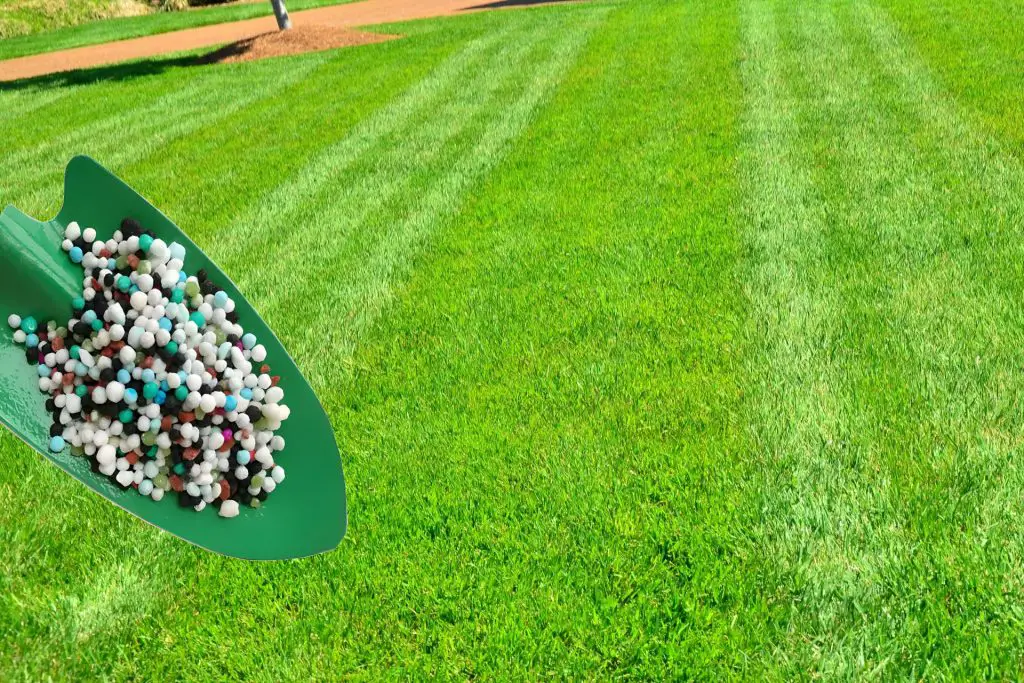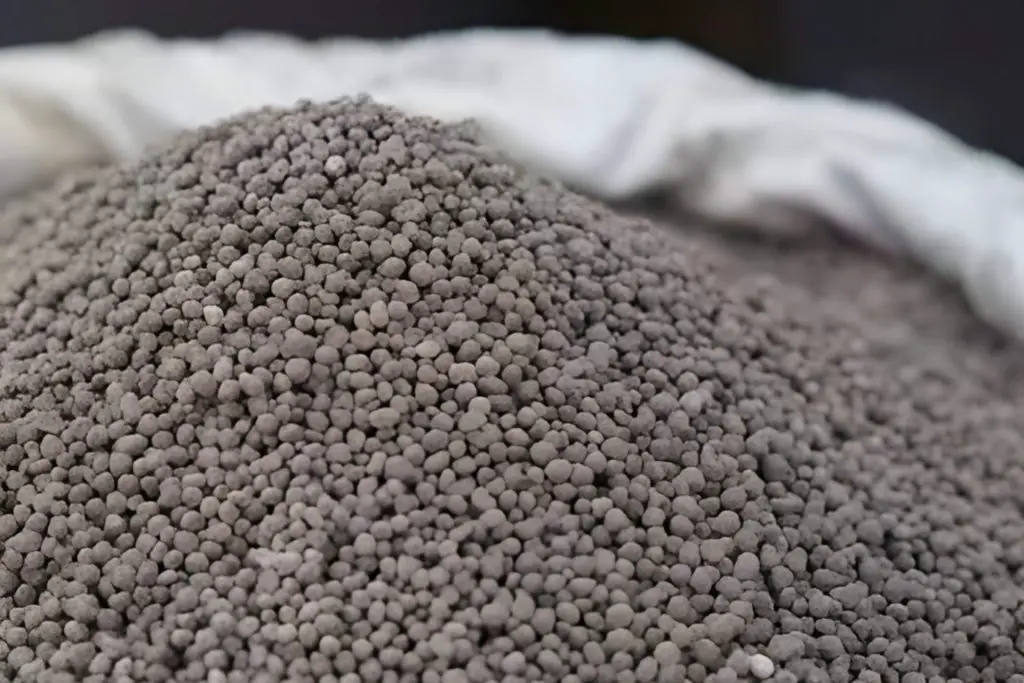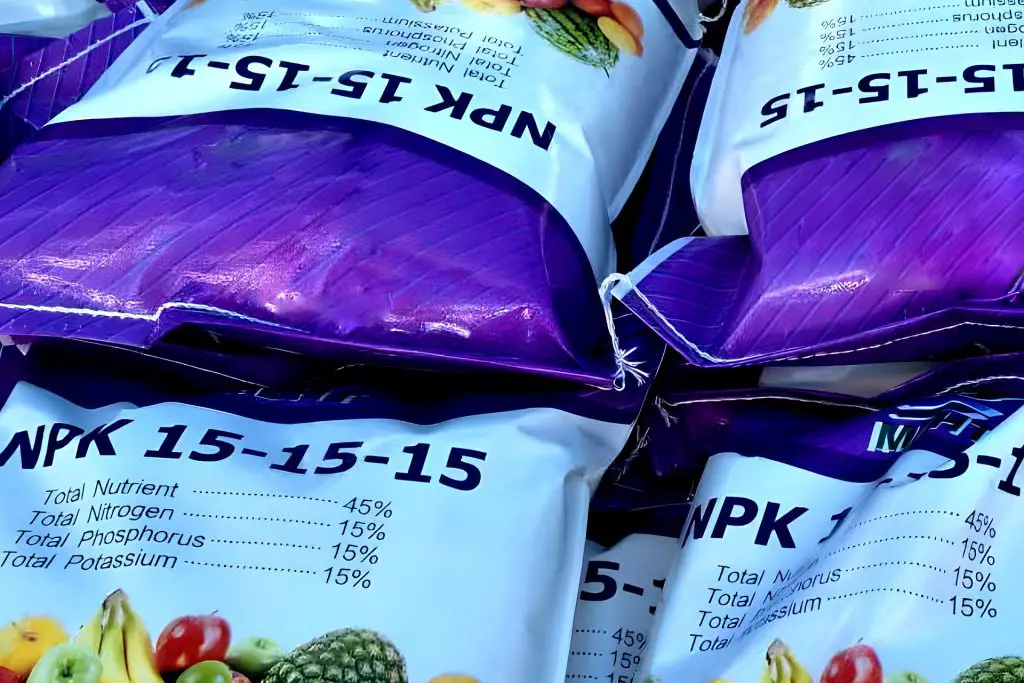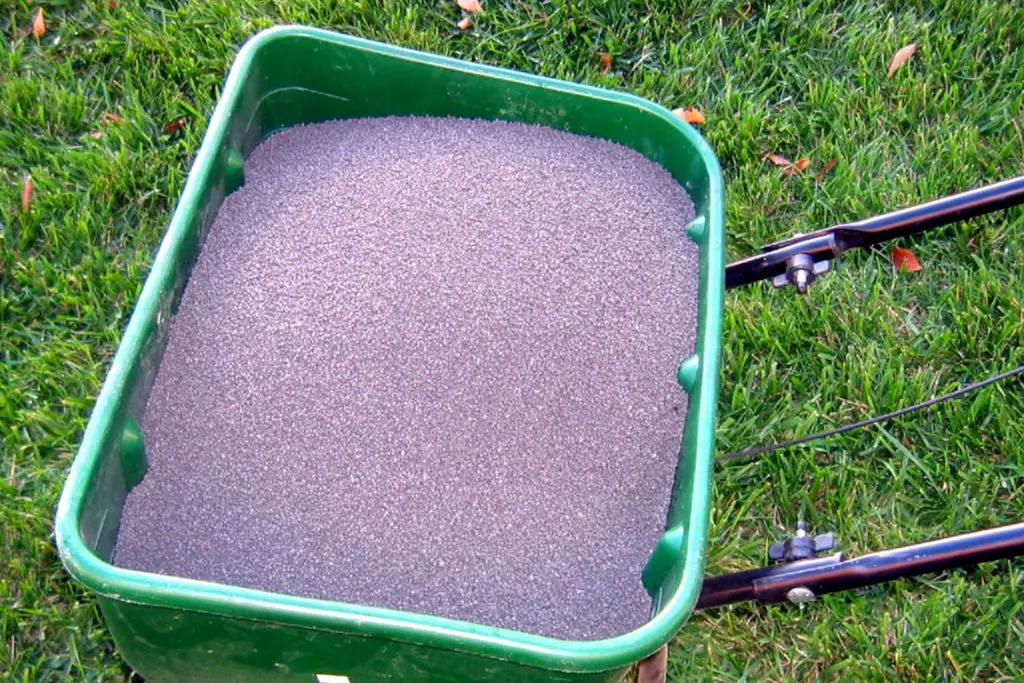How and When to Fertilize New Grass for Best Results? A Guide to Fertilizing a New Lawn
When do you add fertilizer to new grass and which fertilizer do you choose are two important factors in determining how well your new grass thrives. The timing of additional fertilizer applications, that are required to promote and strengthen new grass, will largely depend on the choice of the initial fertilizer you use.
Although you will find that there is a myriad of choices, the actual fertilizer used should be determined by the soil conditions. As you will see, if you don’t analyze the soil correctly you could easily end up using the wrong fertilizer for the job. Beyond soil conditions, there are several other factors, such as the type of grass, additional nutrients that may be required, environmental issues, and personal choice that can also come into play.
When seeding a new lawn you should fertilize your soil as you seed and then again, depending on the type of fertilizer used, around four weeks after the seeds have germinated if using a starter fertilizer. However, good soil preparation is essential to ensuring that the fertilizer you use is effective at providing the grass seeds with the required nutrients.
Why Should I Fertilize New Grass?

Grass, being a living plant, needs a certain combination of nutrients in order to grow and thrive and provide you with a lush green lawn. The best way to ensure that your grass gets the nutrients it needs is to fertilize it on a regular basis. Fertilizing your grass will give it the boost it needs to stay healthy and look its best.
There are a few things to keep in mind when fertilizing your grass, however. First of all, you need to make sure that you are using the right fertilizer for the type of grass you have. Different types of grasses have different nutrient requirements, so using the wrong fertilizer can actually do more harm than good.
Secondly, you need to be careful not to over-fertilize your grass. Too much fertilizer can actually burn your grass, causing it to turn brown and die leaving dead grass.
Things to Do Before Fertilizing New Grass
Before you fertilize your new grass, it’s important to do a few things first. Laying a new lawn can be a slightly more involved task than initially appears. Preparation is the key to success, get it right and you are well on the way to having a fantastic lawn.
A soil test will help you determine what type of fertilizer is right for your application. If you are overseeding your turf, and if your turf has any broadleaf weeds, you’ll need to apply a herbicide before getting started.
Perform a Soil Test to Determine Which Fertilizer to Use
A soil test will help you determine what type of fertilizer is right for your soil. It is good practice to test your soil pH and nutrient levels before planting anything in your garden. If the pH is too acidic then the roots of the new grass won’t be able to absorb the nutrients provided by the fertilizer and tuis will struggle to grow.
This will help you determine whether you have poor soil or healthy soil and what, if any, amendments, such as fertilizer and lime, you need to add to the soil in order to create a healthy environment for your plants.
There are several ways to test your soil, including with red cabbage leaves, soil test kits, and digital testers as well as send a sample to your local cooperative extension office.
Till, Grade and Remove Debris
It is important to make sure the area is as level as possible or even slopes slightly down away from buildings, which would help against water pooling and compacting the soil. Tilling is an important step in the process of preparing the soil.
Till and remove all debris before seeding. The seeds need to come into direct contact with the soil in order to germinate and ensure that your new grass will take root and thrive.
Grading is the name given to the leveling process and is usually conducted at the tilling stage. In general, grade refers to the elevation or ground level at any given location. Ground preparation for seeding a lawn is the process of changing the slope of your yard so that rainfall and other water runoffs flow away from, rather than toward, your home’s foundation.
By transporting tilled soil from the top of a hill to the bottom, rototillers may make grading on moderate slopes easier. On the upper half of the slope, you would till at a deeper depth and adjust the blades to a shallower depth on the bottom half of the slope. Rake some of the dirt off the slope’s top to level the land and produce a fairly even tilled depth. Once completed, this should guarantee that water flows away from structures.
Adjust the Soil pH Using Lime Fertilizer
When you have tested your soil you may find that it is acidic i.e. has a pH of less than 7. Soil pH is a measure of how acidic or alkaline the soil is. Soil pH affects plant growth, nutrient availability, and soil microorganisms.
Most grass prefers a soil pH of 6.5 to 7.0, although some grass varieties, such as zoysia and centipede grass do well in more acidic soil. The goal when adjusting the soil pH is to achieve the desired pH and maintain it within a narrow range. There are several ways to adjust the soil pH, including adding lime fertilizer.
Lime is a mineral that, when added to soil, helps to change the pH of the soil. It can be used to control the acidity levels in the soil. You would usually add the lime at the time of seeding or a few days after. It is not best practice to add the lime and fertilizer together.
Choosing the Best Fertilizer for New Grass

Once the ground is prepared for seeding it is time to choose a fertilizer. It is possible to get away with almost any sort of fertilizer, but picking the proper one may make a major difference in the long run. There are numerous sorts of fertilizers to consider, some of which will function better than others under certain conditions.
Fertilizers are classified into two types: organic fertilizers and synthetic fertilizers. When determining the fertilizer to use in your hydroseeding mix, consider how the fertilizer will affect both your soil and the plant. Both organic and synthetic fertilizers provide nutrients, but synthetic fertilizers have more control over the ratios.
Chemicals are used to deliver nutrients to plants in synthetic fertilizers. They are often utilized to accelerate growth and boost agricultural yields. Synthetic fertilizers, on the other hand, may be less beneficial in the long run in terms of feeding soil organisms, enhancing soil structure, and boosting soil quality.
Organic fertilizers, on the other hand, are mostly composed of naturally occurring components found in the ground. These elements are broken down into tiny parts by plants and absorbed via their roots. Organic fertilizers assist to increase soil health and structure over time. However, they take longer to decompose and release nutrients into the soil.
Inorganic fertilizers can be either granular or liquid in form when put done. If you are putting down the fertilizer with the seed then unless hydroseeding, granular fertilizer is the best option for broadcasting with seed. If you are applying fertilizer before seeding then liquid fertilizer can be a good option as liquid fertilizer will work its way into the soil more quickly.
Other considerations include the environmental effect of synthetic fertilizers vs organic fertilizers. This is most likely a matter of personal preference.
Slow-release vs fast-release fertilizers
In addition to deciding whether to use organic or synthetic fertilizers, the next consideration will be whether to utilize quick-release (also known as lawn starter fertilizer) or slow-release kinds.
Depending on the individual site conditions, each of these strategies offers advantages. They may also influence the application and timing of post-seeding fertilization.
The difference between the two is that slow-release fertilizers release nutrients gradually over time, while fast-release fertilizers dissolve swiftly in soil and supply nutrients within hours.
In general, both types of fertilizers may be beneficial to new lawns. Slow-release fertilizer permits grass to grow slowly without being hampered by weed competition. Fast-release fertilizers, on the other hand, are ideal for established lawns. They swiftly feed nutrients to the grass, causing it to grow quicker.
So, which fertilizer is the best? That is dependent on your objectives. If you want the grass to grow fast, you should apply synthetic fertilizer. However, if you want to nourish the soil ecology, which should result in better grass in the long run, you might consider using a high-grade organic fertilizer.
Using a Fast Release Fertilizer for New Grass
Which kind you choose will be determined by your goals. When sowing, it is typical to want to establish the grass as quickly as feasible. This usually means favoring starter fertilizers that give nutrients quickly and stimulate rapid development.
If you use this technique, you will almost probably need a second fertilizer treatment roughly a month after the seeds have been planted.
Fast-release fertilizers are popular among seeding contractors because they accelerate top (blade) growth. This will provide a faster outcome with a nice dark green hue and a lush lawn, which will normally please you or a client if you are seeding a new lawn as a service.
The disadvantage is that this may come at the price of root establishment, which might have long-term consequences for the quality of the lawn. This may be alleviated to some degree by using a beginning fertilizer high in nitrogen and phosphorus, such as 10-52-10. (nitrogen, phosphorus, potassium ratio)
When You Shouldn’t Use a Starter Fertilizer for New Grass
There are some circumstances when you should not use a starter fertilizer. One important reason is the elevated nitrogen levels in starter fertilizers can cause runoff, which can damage other plants and pollute waterways. In addition, using a starter fertilizer may not be necessary if the soil is already rich in nutrients.
Using Slow Release Fertilizer for New Grass
A slow-release fertilizer is the second alternative. This is useful if the soil you’re sowing is already nutrient-rich. This means that a second fertilizer treatment will be unnecessary for a while, possibly about three months after the seed is planted.
Because the soil is already nutrient-rich, the seed will be able to establish itself, while nutrients will continue to be released into the soil over the following two to three months.
Always collect and analyze soil samples from the earth before planting. These findings will assist you in determining which strategy is best suited to each job.
Generally, you would look to use a quick-release starter fertilizer. When you are selecting a starter fertilizer for your new lawn, it is important to understand the different ratios of nitrogen (N), phosphorus (P), and potassium (K) that are available.
A starter fertilizer that is high in N will help your lawn to grow faster and stronger. However, it is also important to make sure that the fertilizer contains enough phosphorus and potassium so that your lawn can establish a healthy root system. A good ratio for starter fertilizer would be about 21-22-4 NPK.
Using Compost for Seeding New Grass
Another alternative to starter fertilizers is compost. It is a fully organic material that is environmentally friendly.
Compost is a slow-release, nutrient-rich material that can give the grass seed a good foundation to grow. It provides all the essential nutrients and helps the grass to establish strong roots. It also helps the soil to retain water, which is important for new grass seedlings.
Lawn Fertilizer Nutrients: What You Need to Know

Fertilizers provide essential nutrients to the soil to help the grass seeds to germinate and thrive. There are three numbers, such as 10-10-10, printed on the majority of commercial fertilizer packages and these are a fertilizer’s NPK. Thes numbers tell us the fertilizer’s nutrient content and the amount of nitrogen, phosphorus, and potassium that it contains.
The proportion of nitrogen in fertilizer is shown in the first number. Nitrogen content in fertilizer increases with percentage. Percentages are frequently used to describe the concentrations of phosphorus and potassium. If the numbers read 10-10-10, then 1 pound of nitrogen is contained in a ten-pound bag; but, if the numbers read 21-22-4, then 2.41 pounds of nitrogen are included in a ten-pound bag.
Commercial fertilizers come in a variety of ratios of nutrients, each with a specific use case, so it’s always a good idea to check the label to be sure you’re getting the right product for the task at hand.
Fertilizer’s Salt Index
You should know that all fertilizers are salts, with some having a higher sodium content. Muriate of potassium (MOP) has a salt index that is just slightly lower than that of sodium chloride, and it is often sold in supermarkets as “Lite table salt.”
On the salt index, MOP registers at 116, which is over three times larger than SOP, which registers at 43 on the salt index.
There are two reasons why this is significant.
- A high salt index in fertilizer may delay or hinder seed germination (because salt leaches moisture from the ground).
- To get potassium into the soil, farmers use salts.
As a result, a fertilizer high in sulfate of potash would be a superior option as a way of delivering the required level of potassium into the soil.
When to Fertilize New Grass
As we have discussed you will need to apply fertilizer at least twice in the initial growing cycle, at seeding and either three to four weeks later or two to three months after seeding. The distance between applications will depend on the original nutrient levels in the soil, and the type of fertilizer used on seeding.
Inorganic fertilizers can be either granular or liquid in form when put down. If you are putting down the fertilizer with the seed then unless hydroseeding, granular fertilizer is the best option for broadcasting with seed. If you are applying the booster fertilizer a few weeks after germination then liquid fertilizer can be a good option, as liquid fertilizer will work its way into the soil more quickly.
Fertilizing on Seeding the Lawn
Ideally, you should fertilize when broadcasting the seed. This is the easiest option and saves a lot of time. If however, you need to apply lime to reduce acidity and help with calcium and magnesium levels, this can alter the process. There are two schools of thought as to which to apply first.
Fertilizer and Grass Seeds First Before Lime
There are those that argue that the fertilizer should be applied first. This ensures that the soil is enriched with the nutrients needed for seed germination then after seven to ten days, lime is given to the soil to ensure that the newly created roots are able to make use of the fertilizer’s nutrients. The important problem with this approach is that you would need to walk over the germinating grass seed to apply the lime which you should obviously avoid doing.
Lime Before Fertilizer and Grass Seed
The argument here is that the soil will be brought back into balance before the nutrients and the seeds are put down. There is always a possibility of making the soil too alkaline in anticipation of the nitrogen fertilizer to come.
There is not a perfect answer to this. much will depend on the results of the soil sample you took to test the soil. Generally, depending on your broadcasting equipment, we would lime first and then immediately add the fertilizer and seed on top of the lime.
You could do it all at once if you have a conventional broadcast spreader but if you are using a rotary spreader or a drop-style spreader then put down the lime first.
What Time of Year Should You Fertilize New Grass?
The time of year that you fertilize will largely depend upon the grass variety that you are using and whether they are warm-season grasses or cool-season grasses.
If you are putting down warm-season grasses then ideally these should be put down in the spring or late spring as warm-season grasses enjoy warmer soil temperatures, at least 55°F to grow and thrive.
If on the other hand, you are putting down cool-season grass then often the fall is the best time, as they struggle to germinate with higher soil temperatures. However, having said that, much will come down to the local climate. If you are in a temperate climate then spring is also a good time for cool season grass.
The Process for Seeding and Fertilizing a New Lawn

Below are the steps that you should follow when broadcasting the seed.
- Losen and soften the soil surface in the planting area.
- If adding lime first, spread out the required amount of lime over the whole area.
- Grass seed that is suited to your region and your soil’s circumstances should be mixed with the fertilizer.
- Begin by spreading the seed and fertilizer mix in one corner and gradually work your way outward.
- Ensure the mix is liberally broadcast over the target area try to maintain consistent distribution and cover the entire lawn.
- Make sure that each pass is at least 6 inches apart (15 cm).
- Gently push the seed into the loose soil with the back of a garden rake.
- Compost or straw mulch may be applied lightly over the grass seed to help the soil retain moisture
- Water the area to keep the soil moist until the grass has established itself
How to Apply Compost When Seeding a New Lawn
- Losen and soften the soil surface in the planting area.
- When using compost for seeding new grass, you should add a layer around one or two inches thick before seeding.
- You should then broadcast the seeds as above
- Then work them into the loose soil with the back edge of a garden rake.
- After you can cover the seeds with another thin layer of compost around a maximum of 1/2″ thick or instead cover with a straw mulch
- Water to keep the soil moist until the grass is properly established.
Summary: When to Fertilize New Grass for Best Results
As we have seen there are several factors to consider while selecting the right fertilizer for seeding a lawn. But everything starts with the soil condition. Your most important step will be to analyze what the soil needs in terms of pH and nutrient levels to make the grass type that you are putting down thrive. If the ground is too acidic the fertilizer you add is likely to be ineffective.
Other considerations tend to stem from this soil analysis. Whether you use a fast or slow-release fertilizer will depend on the current nutritional value of the soil and whether you are looking for fast growth or long-term grass strength.
Whichever way you choose remember a proper fertilizing maintenance program goes a long way to ensuring a healthy lawn and good long-term grass growth.
